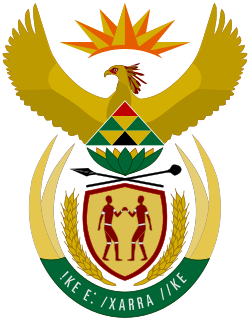



The following outline is provided as an overview of and topical guide to South Africa:
Contents
- General reference
- Geography of South Africa
- Environment of South Africa
- Regions of South Africa
- Demography of South Africa
- Government and politics of South Africa
- Branches of the government of South Africa
- Foreign relations of South Africa
- Law and order in South Africa
- Military of South Africa
- State security in South Africa
- Local government in South Africa
- History of South Africa
- Books on the history of South Africa
- History of South Africa, by period
- History of South Africa, by region
- History of South Africa, by subject
- Culture of South Africa
- Art in South Africa
- Language in South Africa
- People of South Africa
- Specific persons
- Religion in South Africa
- Sports in South Africa
- Economy and infrastructure of South Africa
- Companies in South Africa
- Education in South Africa
- Health in South Africa
- See also
- References
- External links
South Africa – A sovereign country located at the southern tip of Africa. [1] Its coast stretches 2,798 kilometres [2] and borders both the Atlantic and Indian oceans. [3] To the north of South Africa lie Namibia, Botswana, Zimbabwe, Mozambique and Eswatini (formerly Swaziland), while the Kingdom of Lesotho is an independent enclave surrounded by South African territory. [4]


